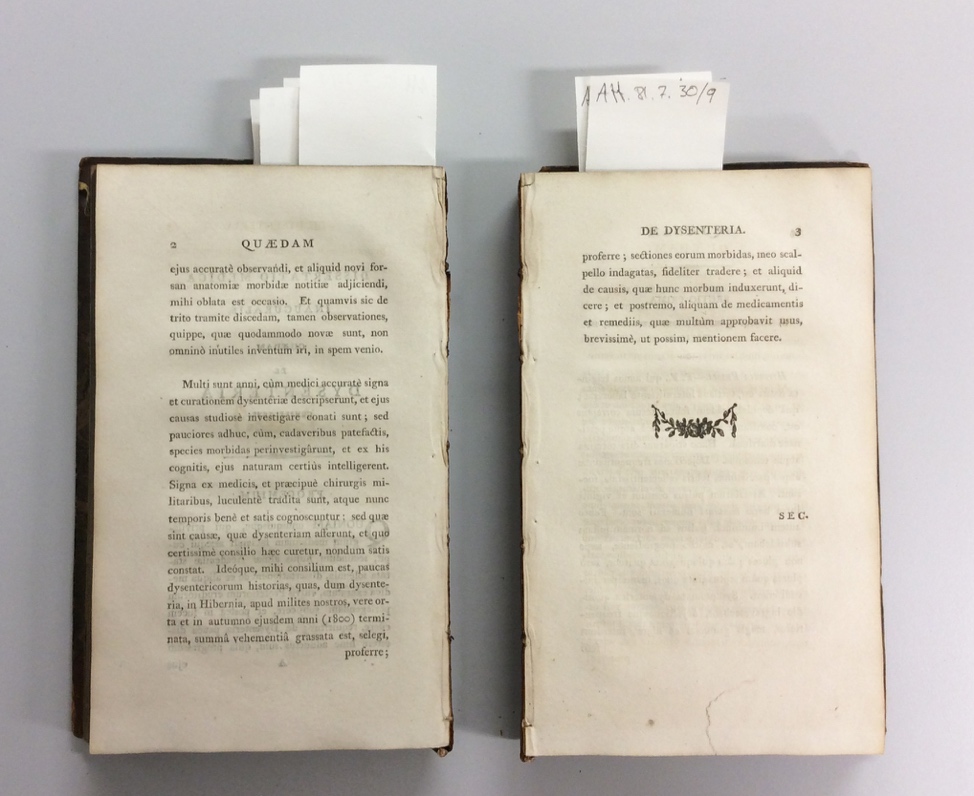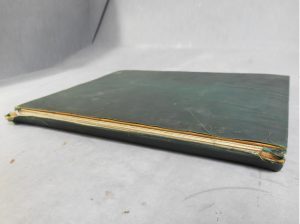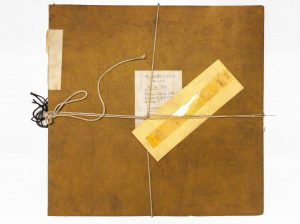In this post book conservator Amy Baldwin talks about the conservation work undertaken on volumes appearing in the upcoming online exhibition “Rewriting the script: the works and words of Esther Inglis”.
Tag Archives: digitisation
The Good, the Fair and the Unusable. Conservation of Session Papers at the CRC.
This week, Projects Conservator Nicole introduces a brand new project she is working on at the CRC…
I am currently working on a 6-month pilot project to conserve three collections of Scottish Session Papers prior to digitisation. The collections are held across three institutions: the Advocate’s Library, the Signet Library and here at the Centre for Research Collections. These collections consist of around 6,500 volumes, comprising of multiple case papers in one volume. The case papers of the Scottish Court of Session are the most significant untapped printed source for the history, society and literature of Scotland from 1710-1850. They cover an extraordinary period in the nation’s history from the immediate aftermath of the Union of 1707 through the Jacobite wars, the Enlightenment, the agricultural and industrial revolutions and the building of Walter Scott’s Edinburgh.
Scottish Session Papers Condition Survey
In this week’s blog, Special Collections Conservator, Emily, describes the conservation problems encountered during a condition survey of a collection of bound volumes…
I have recently carried out a condition survey of three collections of Scottish session papers across three sites in Edinburgh; the Centre for Research Collections, Signet Library and Advocates Library. Session papers are documents used in the presentation of cases in the Court of Session, Scotland’s supreme civil court. They are the written pleadings of contested cases, plus non-legal documentary exhibits such as drawings, plans and maps. The papers give a valuable insight into the social, economic, political and legal history of Scotland. I am carrying out this survey as a part of a pilot project to evaluate digitisation options, and estimate the time needed to conserve and digitise the collections and the associated costs. This project is being carried out in conjunction with John Bryden, Project Photographer in the Digital Imaging Unit team.

Session papers at the Centre for Research Collections
A Book of Two Halves
Our Projects Conservator, Nicole, describes a technique for repairing books that have broken in half in this week’s blog…
I have now moved full time to the conservation studio at the main library and I have started working on the Latin thesis from 1726 – 1826 which contain a number of PhD thesis in one leather binding.
The majority of this collection is in good condition with just under half needing conservation treatment before digitisation, mostly quick treatments such as being board reattachment. A small number of volumes have been rebound with a hollow and using book cloth which makes them more accessible and easier to be digitised. However, 46 volumes have broken sewing resulting in the text block breaking in half or in some cases three or four separate pieces. This has been caused by repeated use, and forcing the volumes open.

An example of a Latin thesis broken in half, before conservation
PhD Theses Conservation
My name is Nicole and I am excited to be in my fourth week as the new digitisation project conservator working on conserving the PhD theses before digitisation. The PhDs I am working on range from 1750–1961 and are mostly bound. The volumes vary in size and material. The earlier volumes are bound in leather and hand written, while the later volumes are bound in book cloth and typed.
At present my time is split between two locations for conserving the PhDs: the Library Annex and the Main Library conservation studio.
So far I have mainly been working on the medical PhDs which include some beautiful and what must have been very time consuming drawings. The volumes also house many photographs and x-rays, including the x-ray of a shilling swallowed by a patient!
My current conservation work focuses on the volumes which had been flagged up by the survey carried out prior to my arrival. The treatments I have undertaken so far include surface cleaning, consolidation of red rot using Klucel G in IMS, inner joint repair to reattach loose or detached boards, minor paper repairs and reattaching damaged spines to volumes using a hollow made from archival paper.

Detached spine on bound volume
The aim of the conservation work is to stabilise the volumes for digitisation and to ensure the text and imagery are visible. On occasion rehousing is needed, made out of archival board.

Thesis to be rehoused
Keep an eye out for updates on this project!
